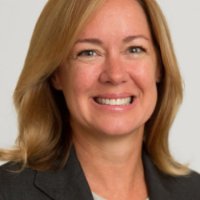Actively managed exchange-traded funds don’t account for a huge portion of the ETF universe, but that could be changing, and the New York Stock Exchange’s electronic venue Arca, where the majority of ETFs are listed, is banking on that being the case.
According to Laura Morrison, head of U.S. ETP listing and trading for NYSE Euronext, actively managed ETFs have seen their assets grow 64 percent over the past three years, while exchange-traded products overall have increased only about 13 percent.

Today, actively managed ETFs account for nearly $5.9 billion in assets. The total amount of money invested in exchange traded products is more than $1.2 trillion.
With the launch on Thursday of three new funds offered by State Street, there are now 47 actively managed ETFs total, which compares to around 1,500 exchange-traded products overall. In spite of the relatively low numbers, actively managed funds represent the future of the industry, Morrison said.
She noted that while there are currently only nine firms that issue actively managed ETFs, 30 more have filed to get in on the action. Firms including AllianceBernstein, Deutsche Bank, Eaton Vance, Janus, JPMorgan, T. Rowe Price and Vanguard have all filed with regulators to issue actively managed ETFs in the future.
Moderating a panel on active ETFs at NYSE on Thursday, Morrison asked industry experts what they saw ahead for such funds. Not surprisingly, State Street’s Timothy Coyne, who heads SPDR ETF capital markets at the firm, was bullish.
“We’re very excited about the active product,” Coyne said. “They are going to be used very heavily by advisors. We think the active space is going to grow.”
Coyne said that for an established mutual fund company like State Street, active ETFs present an opportunity to showcase the firm’s investment management team. However, these funds have also been embraced by a newer firm that has never offered mutual funds.
WisdomTree Investments, which launched its first ETF in 2006, currently has 14 actively managed funds with about $2.8 billion in assets, more than any other firm. Jonathan Steinberg, founder and chief executive officer of WisdomTree, said the firm had no legacy positions to defend, so instead of offering both mutual funds and ETFs, it decided to be “all ETFs all the time.”
While investors tend to prefer ETFs to mutual funds for index investing, Steinberg said the ETF structure is superior for actively managed strategies as well, in part due to their transparency. For a manager that takes large, highly concentrated positions, that transparency might be a hindrance, but it most cases, it’s a good thing, he said.
Another advantage ETFs have over mutual funds, according to Steinberg, is tax efficiency. Coyne agreed, noting that the creation-redemption process for ETFs means managers don’t have to sell positions to meet redemption requests, which can lead to capital gains.
During the creation-redemption process, a lead market maker can buy the underlying components of an ETF and create a new share for an investor, or can redeem an ETF share, selling the components of the ETF.
Damon Walvoord, director of index and ETF sales and trading at Susquehanna International, which acts as an LMM, said that in addition to aiding tax efficiency, the creation-redemption process means that ETFs are always at least as liquid as their underlying assets, even if they trade at a low average daily volume.
In the past, most of the expansion in ETFs has been from index products, but actively managed funds could be the next frontier of growth, according to Walvoord.
One might think that active managers would be afraid of giving away their expertise with ETFs, since those vehicles are fully transparent. Noah Hamman, founder and chief executive officer of the ETF issuer AdvisorShares, said actively managing an ETF means that investors are free to simply copy a strategy without paying a management fee, but as a practical matter, that usually doesn’t happen.
“Most rational people aren’t going to go every day to my Web site to see what percentage each holding is,” Hamman said.
Don Suskind, ETF product manager at PIMCO, agreed. He noted that even before it got into the ETF business, his company always tried to be transparent and communicative, and that transparency had never hurt PIMCO’s business in the past.



